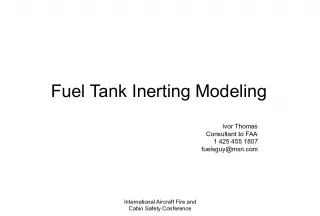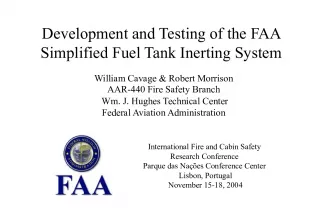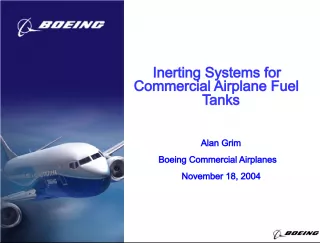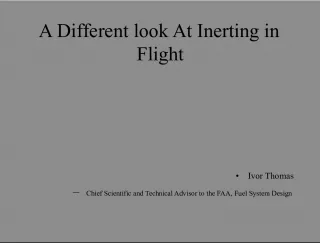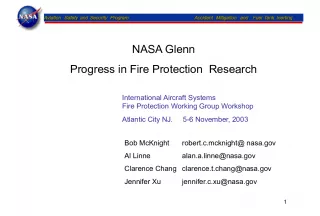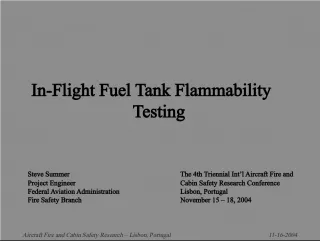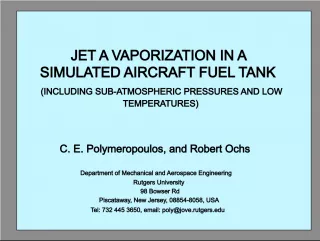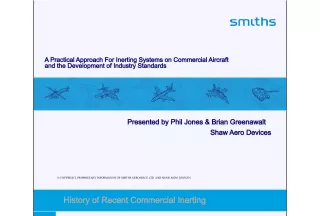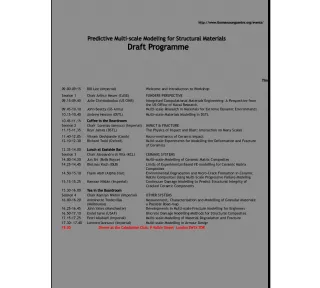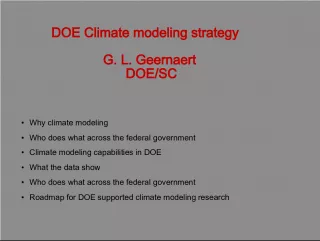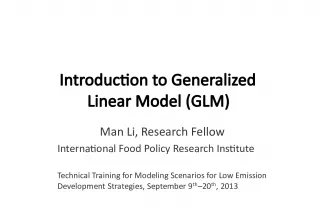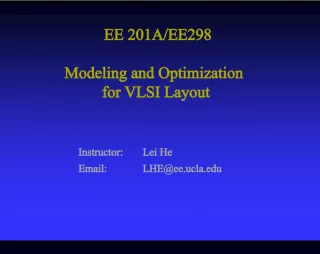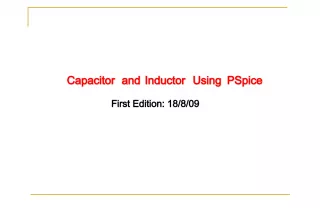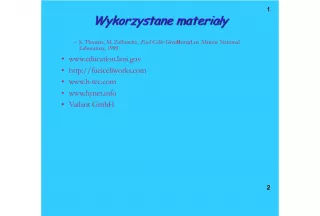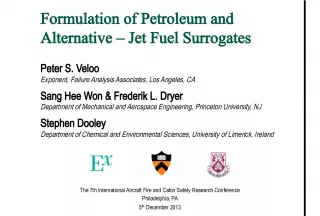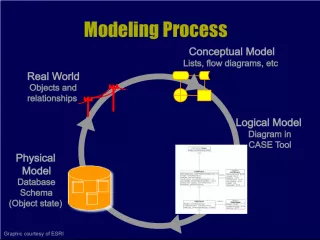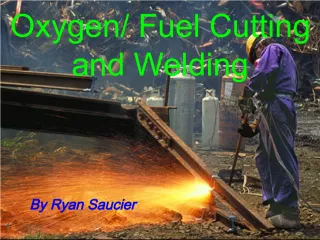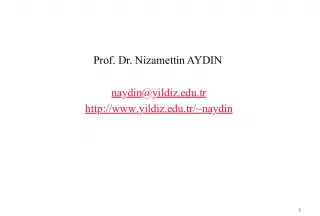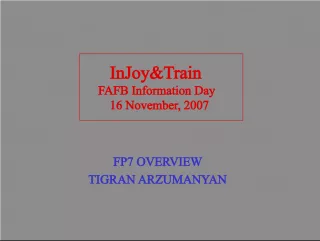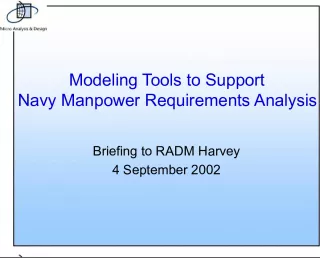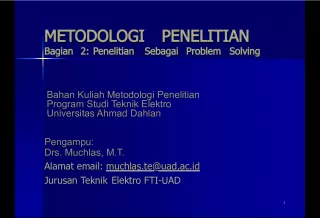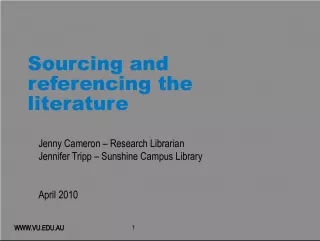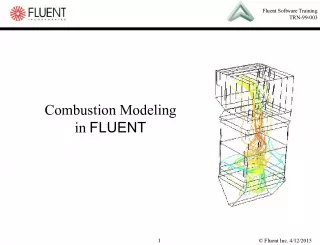Modeling of Fuel Tank Inerting for FAA OBIGGS Research


In this presentation, William Cavage from the AAR 440 Fire Safety Branch at the Wm J Hughes Technical Center of the Federal Aviation Administration discusses the modeling
- Uploaded on | 1 Views
-
 chloeevans
chloeevans
About Modeling of Fuel Tank Inerting for FAA OBIGGS Research
PowerPoint presentation about 'Modeling of Fuel Tank Inerting for FAA OBIGGS Research'. This presentation describes the topic on In this presentation, William Cavage from the AAR 440 Fire Safety Branch at the Wm J Hughes Technical Center of the Federal Aviation Administration discusses the modeling. The key topics included in this slideshow are . Download this presentation absolutely free.
Presentation Transcript
Slide1Modeling of Fuel Tank Inerting forFAA OBIGGS Research William Cavage AAR-440 Fire Safety Branch Wm. J. Hughes Technical Center Federal Aviation Administration International Fire and Cabin Safety Research Conference Parque das Na çõ es Conference Center Lisbon, Portugal November 15-18, 2004
Slide2Modeling of Fuel Tank Inerting____________________________________ AAR-440 Fire Safety R&D Outline • Background – Goals and Objectives – Previous Work • Analytical (calculation) Models • Physical (scale) Models • Modeling Methods – Scale A320 Tank in Altitude Chamber – Calculation Model – Scale 747 Tank in Altitude Chamber • Summary
Slide3Modeling of Fuel Tank Inerting____________________________________ AAR-440 Fire Safety R&D Background • FAA has been developing and testing an OBIGGS for fuel tank inerting to illustrate the feasibility of light weight, simplified inerting systems to reduce flammability in commercial transport airplanes • Modeling inert gas effects and distribution in commercial transport fuel tanks could assist in the development process and allow for cost effective systems analysis and trade studies – Capitalize on previous FAA modeling work done in support of ground based inerting research (sea level inerting only) – Models have to be simple to be useful in a cost analysis study or rulemaking exercise – FAA has a relatively large amount of flight test data to validate any developed models
Slide4Modeling of Fuel Tank Inerting____________________________________ AAR-440 Fire Safety R&D Previous Work – Ullage [O2] Calculation Model • Uses perfect mixing assumption and calculates the volume of oxygen in and out of tank at every time step – Uses a basic spreadsheet iterating calculation and runs immediately given the volume of the tank, the flow rate and purity of the NEA – Constant inerting only
Slide5Modeling of Fuel Tank Inerting____________________________________ AAR-440 Fire Safety R&D Previous Work – Multi-Bay Inerting Model • Engineering model that calculates inert gas distribution in 6- bay tank, in terms of oxygen concentration evolution, given NEA purity and bay deposit flow rates – Based on calculation method previously discussed and tracks oxygen in and out of each bay assuming perfect mixing – Designed for “localized deposit” methods and assumes an “outward” flow pattern, splitting flow to adjacent bays based on flow area relationships – Data agreed fairly well with full-scale data
Slide6Modeling of Fuel Tank Inerting____________________________________ AAR-440 Fire Safety R&D Engineering Model Inerting Data Comparison
Slide7Modeling of Fuel Tank Inerting____________________________________ AAR-440 Fire Safety R&D Previous Work – Scale 747SP CWT • FAA built and performed tests in 24% scale 747SP (classic type) center-wing fuel tank – Made from plywood using NTSB Shepherd report drawings – Scaled all penetrations (holes) between bays and vent system – Variable NEA deposit capability to allow for inerting of tank with scaled flows in each bay – Oxygen concentration measured in each bay – Model data duplicated full-scale results very well for localized deposit method studied
Slide8Modeling of Fuel Tank Inerting____________________________________ AAR-440 Fire Safety R&D Scale Model Inerting Data Comparison
Slide9Modeling of Fuel Tank Inerting____________________________________ AAR-440 Fire Safety R&D • Regardless of methodology, all modeling methods predict bulk ullage oxygen concentration well Previous Work – Average [O 2 ] Predictions
Slide10Modeling of Fuel Tank Inerting____________________________________ AAR-440 Fire Safety R&D Modeling Method – Altitude Calculation Model • A calculation model of average ullage oxygen concentration based on inert gas added and altitude change was developed based on existing model – Model changed to calculate mass of oxygen added and removed at each time step, assuming perfect mixing, in a single bay tank given a tank volume and starting oxygen concentration – Must input system performance (NEA flow and purity) in terms of time and altitude – Calculates ullage gas removed from tank due to increase in altitude (decrease in pressure) to calculate mass of oxygen decrease in tank – Calculates air entering tank due to decrease in altitude (increase pressure) to calculate mass of oxygen increase – The model is a relatively simple time step spreadsheet that calculates instantaneously
Slide11Modeling of Fuel Tank Inerting____________________________________ AAR-440 Fire Safety R&D Modeling Method – Altitude Calculation Model – Basic equation governing modeling method With: = Mass of oxygen in tank at time t = Mass flow rate of inerting gas (in terms of t ) IGOF = Fraction of oxygen in inerting gas Δρ = Change in Ullage Density due to Altitude Change V Tank = Volume of Tank Ullage m Tank = Mass of Gas in Tank m air = Mass of air entering tank Ullage Gas Oxygen Fraction (UGOF) is given as: – Simple effective model for predicting resulting ullage oxygen concentration given a system performance and mission profile
Slide12Modeling of Fuel Tank Inerting____________________________________ AAR-440 Fire Safety R&D Altitude Inerting Calculation Model Data Comparison
Slide13Modeling of Fuel Tank Inerting____________________________________ AAR-440 Fire Safety R&D Modeling Method – Scale A320 CWT • FAA built and performed tests in 50% scale Airbus A320 center-wing fuel tank – Made from plywood using drawings given to us by Airbus in support of joint inerting flight test – Scaled all structural members of tank inside down to the smallest detail – Mass flow controller and NEA mixer used to inert the tank in altitude chamber – Altitude oxygen analyzer used to track ullage with additional basic instrumentation
Slide14Modeling of Fuel Tank Inerting____________________________________ AAR-440 Fire Safety R&D Block Diagram of Scale A320 CWT Experiment
Slide15Modeling of Fuel Tank Inerting____________________________________ AAR-440 Fire Safety R&D • Results indicate that duplication of the flight cycle with the system performance in the altitude chamber was accomplished with coordination of test personnel • Measured scale tank oxygen concentration data illustrated good agreement with flight test results considering the large differences in measurement systems sample lag • Localized oxygen concentration dynamics illustrated some fidelity when specific sample location data were compared with similar locations in the flight test aircraft Modeling Method – Scale A320 CWT
Slide16Modeling of Fuel Tank Inerting____________________________________ AAR-440 Fire Safety R&D Full-Scale Data Compared with Scale System Performance
Slide17Modeling of Fuel Tank Inerting____________________________________ AAR-440 Fire Safety R&D Full-Scale Data Compared with Scale Model [O2] Results
Slide18Modeling of Fuel Tank Inerting____________________________________ AAR-440 Fire Safety R&D Full-Scale Data Compared with Modeling Methods
Slide19Modeling of Fuel Tank Inerting____________________________________ AAR-440 Fire Safety R&D Comparison of Modeling Methods Modeling Data for System Size Comparison Ullage [O 2 ] for Airbus v1972 Test Descent
Slide20Modeling of Fuel Tank Inerting____________________________________ AAR-440 Fire Safety R&D Modeling Method – Scale 747SP CWT • FAA performed tests in 24% scale Boeing 747 (classic type) CWT built for GBI inert gas distribution study – Used scale model in altitude chamber with NEA mixer and mass flow controller and simulated potential 747 missions with predicted system performance – OBOAS used to track bay [O 2 ] – Single deposit in bay 6 – Results appear to make sense but have no flight test data to make valid comparisons
Slide21Modeling of Fuel Tank Inerting____________________________________ AAR-440 Fire Safety R&D • Simple calculation models of average ullage oxygen concentration have been developed and can duplicate flight test data in a fairly accurate manner – Requires no unique engineering skills – Very easy to develop and modify for a wide variety of flight cycles, OBIGGS capabilities and ullage conditions • Scale models can be tested with an altitude facility in a relatively cost effective manner to give good agreement with flight test data – Some specialized instrumentation and facilities needed – Provides some ability to analyze internal flow dynamics – More work is needed to validate this method for compartmentalized tanks Summary
